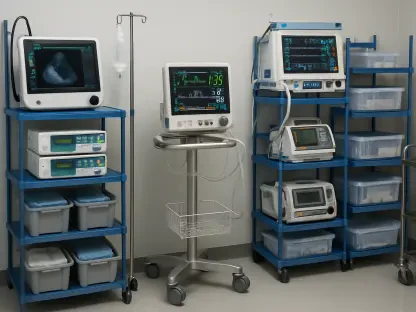The pursuit of universal healthcare in the Philippines represents a bold vision to ensure medical access for every citizen, a commitment enshrined in the Universal Health Care (UHC) law enacted several years ago. However, the journey toward this goal is fraught with obstacles that threaten to undermine even the most well-intentioned policies. A notable step forward came with President Ferdinand Marcos, Jr.’s announcement of the zero balance billing policy, known as the “Bayad Na Bill Mo” program, during his fourth State of the Nation Address on July 28. This initiative seeks to eliminate out-of-pocket expenses for patients admitted to basic ward accommodations in 87 Department of Health (DoH) hospitals across the nation. While this offers a glimmer of hope for reducing financial burdens, the policy’s limited scope and the broader systemic issues within the healthcare framework reveal a stark contrast between ambition and reality, raising critical questions about the feasibility of true universal coverage.
Policy Intent vs. Practical Execution
Systemic Gaps in Implementation
The disparity between the aspirations of universal healthcare and its actual rollout in the Philippines is glaring, with foundational issues hampering progress. The UHC law, pushed through with haste by the 17th Congress several years ago, prioritized political expediency over meticulous planning, often disregarding critical warnings from the World Health Organization (WHO) about premature implementation. Such rushed efforts have led to a system that struggles to meet even basic healthcare demands, as evidenced by the restricted reach of the zero balance billing policy. This initiative, while aiding over 14,000 patients since its inception on May 14, applies only to specific accommodations in DoH hospitals, leaving many outside its benefits. The lack of preparatory infrastructure and resources continues to hinder the policy’s effectiveness, exposing a healthcare framework that is ill-equipped to handle the needs of a vast and diverse population, and casting doubt on the sustainability of such reforms without deeper systemic change.
A deeper look into these systemic gaps reveals how historical decisions continue to impact current healthcare delivery. The political motivations behind the rapid enactment of the UHC law have resulted in a patchwork of policies that fail to address core deficiencies, such as inadequate funding and poor coordination between national and local health authorities. This has created a fragmented system where initiatives like “Bayad Na Bill Mo” serve as temporary fixes rather than comprehensive solutions. Moreover, the absence of a robust monitoring mechanism to evaluate the impact of such policies means that gaps in coverage—particularly for those not in DoH hospital wards—go unaddressed. The consequences are felt most acutely by low-income families who, despite the promise of universal care, still face significant out-of-pocket costs when seeking treatment in private facilities or for non-covered services, highlighting the urgent need for a more inclusive and well-planned approach to healthcare reform.
PhilHealth’s Structural Limitations
At the heart of the challenges facing universal healthcare lies the role of the Philippine Health Insurance Corporation (PhilHealth), which operates primarily as a financing entity rather than a direct provider of care. This structural design diverges sharply from models in countries like the United Kingdom, where government ownership of hospitals and direct employment of healthcare workers ensure seamless and comprehensive coverage. In the Philippines, PhilHealth’s limited capacity to deliver services or manage health financing with expertise results in inconsistent support for patients, even under policies like zero balance billing. This mismatch means that many Filipinos still bear financial burdens for medical care, as the agency struggles to cover costs beyond basic ward accommodations in designated hospitals, underscoring a fundamental flaw in the system’s architecture that prevents the realization of equitable healthcare access for all.
Further examination of PhilHealth’s limitations reveals a broader issue of expertise and resource allocation that stifles progress toward universal coverage. Unlike systems where health authorities directly manage facilities and personnel, PhilHealth’s role as an intermediary often leads to delays in reimbursements and disputes over coverage, placing additional strain on both patients and healthcare providers. This is particularly evident in cases where patients require specialized care or treatment in private hospitals, which fall outside the zero balance billing framework. The lack of a unified, government-led healthcare delivery model means that disparities persist, with many Filipinos unable to access timely care due to bureaucratic hurdles or insufficient funding. Addressing these structural shortcomings requires a reevaluation of PhilHealth’s mandate and a potential shift toward a more integrated system that prioritizes direct service provision over mere financial intermediation.
Infrastructure and Access Challenges
Overcrowding and Bed Shortages
One of the most pressing barriers to achieving universal healthcare in the Philippines is the severe shortage of hospital beds, a problem that renders even promising policies ineffective. The WHO recommends a benchmark of 20 beds per 10,000 people, yet the country’s healthcare infrastructure falls drastically short of this standard, with high occupancy rates often surpassing 100% in urban centers like Metro Manila. This overcrowding results in patients being turned away or forced to wait in hallways for treatment, a situation that erodes confidence in the system’s ability to respond to medical emergencies. The zero balance billing policy, while alleviating financial concerns for some, cannot address this fundamental lack of space, leaving countless individuals vulnerable and highlighting the urgent need for substantial investment in expanding hospital capacity to meet the population’s growing needs.
Beyond the raw numbers, the impact of bed shortages extends to the quality of care provided, further complicating the path to universal healthcare. Overcrowded facilities often mean that healthcare workers are stretched thin, unable to give patients the attention and time required for proper diagnosis and treatment. This issue is particularly acute in DoH hospitals, where the zero balance billing policy applies, as the influx of patients seeking free care exacerbates existing strains on resources. Reports of makeshift wards and shared beds are not uncommon, painting a picture of a system buckling under pressure. Without a concerted effort to build more hospitals and increase bed availability, policies aimed at reducing financial burdens risk becoming hollow promises, as access to physical infrastructure remains a critical bottleneck that must be addressed to ensure equitable healthcare for all Filipinos.
Rural Healthcare Crisis
Access to healthcare in rural and underserved regions of the Philippines presents an even more daunting challenge, with vast disparities between urban and remote areas amplifying the inequities of the system. Many rural communities lack even primary care clinics, forcing residents to travel long distances—often at great personal cost—to reach the nearest hospital, which may still be overcrowded or understaffed. The concentration of DoH facilities in urban hubs like Metro Manila means that the benefits of initiatives like “Bayad Na Bill Mo” are largely inaccessible to those in remote provinces. This geographic imbalance underscores a critical failure to distribute healthcare resources evenly, leaving millions of Filipinos in rural areas excluded from the vision of universal coverage and facing heightened risks during medical emergencies due to delayed or absent care.
Efforts to address the rural healthcare crisis have been proposed, but their implementation remains slow and uncertain, casting a shadow over future progress. Suggestions to expand the zero balance billing policy to local government and state university hospitals, alongside plans to build new facilities in underserved regions, offer a potential pathway to bridge this gap. However, skepticism abounds regarding the funding and timeline for such projects, given the historical underinvestment in rural healthcare infrastructure. Senator JV Ejercito’s call for a substantial PhilHealth subsidy signals political will, yet without concrete action and prioritization of remote areas, these proposals risk remaining aspirational. The stark reality is that until access to basic medical services is ensured across all regions, the promise of universal healthcare will continue to elude a significant portion of the population, perpetuating a cycle of inequality that demands urgent and sustained attention.
Path Forward with Sustained Reforms
Reflecting on the state of universal healthcare in the Philippines, it becomes clear that while initiatives like the zero balance billing policy mark a positive step, they are insufficient against the backdrop of deep-rooted systemic issues. The limited scope of “Bayad Na Bill Mo,” coupled with severe infrastructure deficits and regional disparities, paints a picture of a healthcare system that struggles to fulfill its mandate. Moving forward, actionable solutions must prioritize the expansion of hospital capacity, particularly in rural areas, through targeted investments over the coming years. Additionally, reevaluating PhilHealth’s role to shift toward a more integrated, government-led model of care delivery could address structural inefficiencies. Proposals to increase funding and extend zero balance billing to additional facilities show promise, but require unwavering commitment to implementation. Only through sustained reforms and a focus on equitable access can the vision of comprehensive medical coverage for all Filipinos begin to materialize, paving the way for a healthier and more inclusive future.









